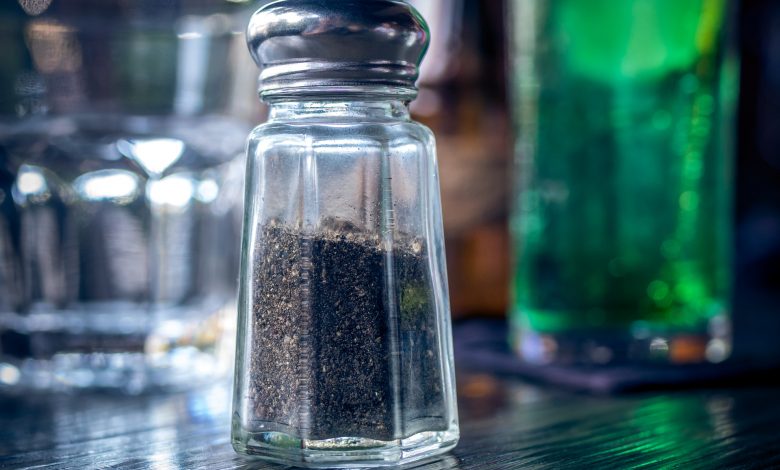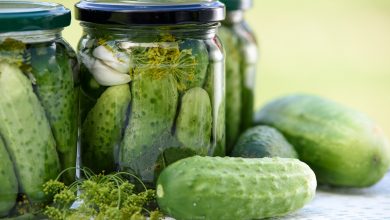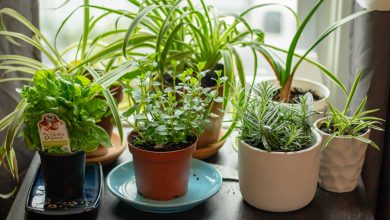Where Does Black Pepper Come From?

Curiosity doesn’t kill a gardener; instead, it makes a gardener better. Wondering where the famous black pepper commonly found in your kitchen, garden, and every restaurant you stroll into comes from? We’ve got the explanation.
Black pepper is a spice that’s sure to excite you, not only as a condiment in your food, but as one you can also unravel its captivating history from start to finish.
History of Black Pepper
This world-renowned spice is one to arouse curiosity. Hence, archeologists took on successful research and found reliable evidence that proves that Indians have been basking in the benefits of black pepper as way back as 2000 BC. Also, it seems the Indians and Egyptians traded pepper in the following years. This notion is believed because peppercorns were squeezed into Ramses the Great’s nostrils as a way of preserving his corpse (mummification) as practiced by the ancient Egyptians.
The Romans fell in love with this herb; hence, their merchants ensured that they profited from its wide acceptance. Therefore, they transported peppercorns out of India to Rome. The Romans proved their adoration for peppercorns when their commanders offered Visigoths more than two thousand pounds of the pepper, amongst other valuables, in 410 AD during its historical war against the city.
Following the sack of Rome, Arabians became the major marketers of the pepper. By the tenth century, the blue-blooded Europeans happily welcomed the spice into their kitchens. Due to its popularity and acceptance, other traders such as the Venetian, Portuguese, and Genoan laid their hands on the priceless condiment and began to sell it too. Even at that, the costliness of this hot spice remained unchallenged.
In the high middle ages, pepper was indeed a precious seasoning, costing its consumer so much of their legal tenders. This costliness holds because the cost of transporting it from far away India to the Western world employed the services of extra retailers.
The power of being the major sellers of this spice soon shifted over to the Dutch and afterward the British. Presently, various nations of the world do not need to pay highly for this commodity or await the services of many middlemen to enjoy the gift of this herb, as many countries such as China, Thailand, Brazil, and Malaysia now cultivate and export it.
India, No Longer Home to Black Pepper
Sadly for India, the country has lost her birthright to this fascinating spice and has had to sell it as cheaply as it can get. This decrease in sales results from the commonality of the herb. Besides, there was also an increase in the importation of pepper from various regions around the world.
The exporters of pepper in India assert that the decrease in the price of pepper in the country results from the major importation of the spice from other regions such as Chennai, Mumbai, and Tuticorin. Although there were governmental efforts to inhibit the gross importation of the country’s pepper from other regions through the enactment of minimum import price for the commodity in 2017, nonetheless, its exporters from other countries defied the implementation.
More so, India is now producing black pepper at a very low rate. Natural disasters such as flooding and the enormous rainfall in the country are responsible for this. So a handful of Indians rely on imports from abroad to enjoy the advantages of their beloved spice now. Consequently, more Indian farmers now grow cardamom to gain more profits from their work.
We can say that black pepper in India is nearly a thing of the past with its only hope in the pages of history books.

Basics Things You Should Know About Black Pepper
Black pepper, scientifically known as Piper nigrum, is a perennial plant belonging to the Piperaceae family. The flowering vine is a climbing evergreen that can reach about ten meters. Its fruits, which you may refer to as peppercorns, are five millimeters in diameter.
Peppercorn indicates maturity by changing its color to become yellowish-red. It has such a pleasant pungent smell that makes it an excellent spice for food. Like most herbs, it contains a couple of essential oils, which are about three percent and have the scented flavor of Capsicum peppers. The seeds of this perennial contain risperidone, chavicine, and piperettine.
Malabar Coast of India is home to this hot condiment. Pepper plant horticulturists sometimes cultivate this crop amidst tea or coffee plants. Furthermore, they start to bear fruits in two to five years and can produce fruits for four more decades.
Piper nigrum thrives better during the rainy season and under the warmth of moderately high temperatures. It grows better when it’s partially exposed to sunlight. You can propagate this plant through stem cuttings.
Processing Black Pepper
Farmers are poised to pluck the peppercorns when they become red. Afterward, they submerge them into boiling water for about ten minutes. Consequently, they become black or dark brown in 60 minutes. To dry these fruits, spread them out where the sun can reach them for about four days. After which, you grind the peppercorns to have the spicy, hot, black pepper you love to taste.
Similarly, you can also derive white pepper from your peppercorns. To obtain this type of pepper from the fruits, all you have to do is take off the dark outermost layer of the pericarp. Then, soften the outer covering by storing the pepper in wet piles for 48 hours or even three days. You can also keep them in sacks immersed under a tap for one to two weeks – the time depends on your region.
When the days of soaking elapse, remove the softened outer layer either by washing and rubbing or by crushing with your feet. Subsequently, dry the pepper under the sun. Another way to prepare white pepper is by mashing the outer layer with a grinding machine. White pepper is more soothing to the taste than black pepper.
Peppers That Aren’t Black Pepper
Admittedly, there are other peppers aside black pepper; after all, we mentioned producing white pepper earlier on.
There are six other varieties of peppercorn. All you have to do is process them in a differing manner from the typical way of harvesting black pepper. Farmers consider white pepper as the more advanced form of peppercorn.
Also, there’s the green pepper. Similar to black pepper, harvesters handpick this spice from orange or red berries. However, they’re not laid under the sun before they’re preserved. Instead, green peppers are pickled in vinegar or brine, or they’re frozen and drained to make it less pungent as the sharp taste of black pepper.
And then, there’s the red pepper – a full-blown version of peppercorn. It’s just as costly as it’s difficult to get.

Variety in Black Peppers
They say variety is the spice of life. And for black pepper, it couldn’t be more accurate, as the condiment doesn’t taste or smell the same. This variety results from the disparities in the countries where the spice is produced. Fortunately, consumers who’d rather enjoy a softer taste and aroma of black pepper are given a chance to make a choice.
The black pepper found in Indonesia is prominent for its strong, citrus scent. To top it all, it burns slowly on the tongue, unfolding into a more severe sensation – very ideal for a barbequed steak. For India, her Tellicherry pepper is more tender, fresh, sweet, and fruity – perfect for a roasted strawberry doughnut. If you’d rather have a Brazil peppercorn, we can bet that you love the milder, soothing flavor the spice eventually gives off.
Health Benefits of Black Pepper
Black pepper has a better reputation than just being the famous recipe for many great cuisines. It also has the following health benefits:
1. High in Antioxidants
Black pepper contains piperine, which is said to have active antioxidant properties. Adding black pepper to your meal can inhibit the impact of free radicals (unstable molecules that can cause damage to the cell) on your health.
2. Treats and Inhibits Constipation
We’ve all had constipation at one point or the other. However, do you know that black pepper is effective in preventing such distress? Adding black pepper to your daily meal helps to prevent constipation, colon cancer, diarrhea, and other diseases emerging from bacterial infection.
3. Has Anti-Inflammatory Properties
Piperine, which is an active compound found in black pepper, plays more than an antioxidant role. It has the power to combat inflammation issues in the body that may be as a result of diabetes or heart disease.
4. Impedes Cancer
In combination with turmeric, black pepper retains the power to inhibit cancer. Moreover, you can make delicious milk spicing it up with the addition of black pepper to also prevent cold. Because it contains carotenoids, vitamin A, and antioxidants, it also retains the curative ability to successfully battle cancer.
5. Treats Skin Issues
Vitiligo has nothing on black pepper. The spice helps to treat white patches that can appear on your skin. If you can’t hit a pharmaceutical store for any reason, you can look into your kitchen to treat any skin pigmentation issues. If you also want skin as smooth as cotton, try consuming the spice to age backward and prevent wrinkles.
Call it the king of spice, as it’s no doubt a complete package that erupted from India, bringing bliss to many cuisines while improving health to aid perfect enjoyment.



